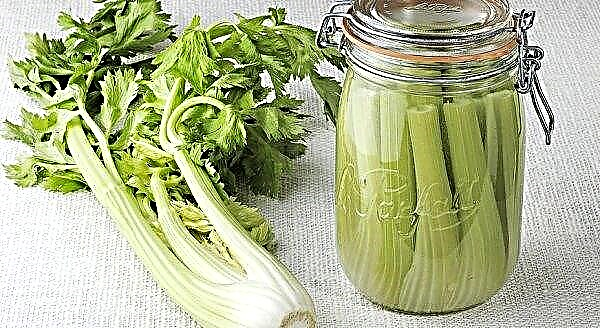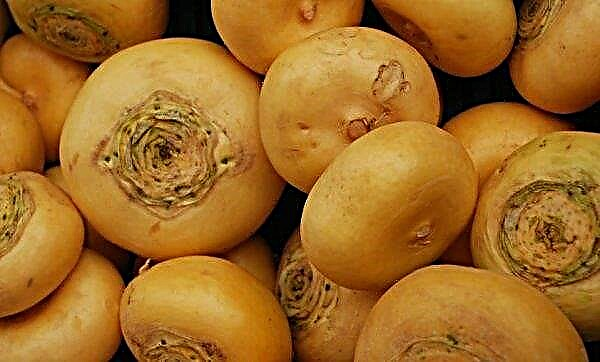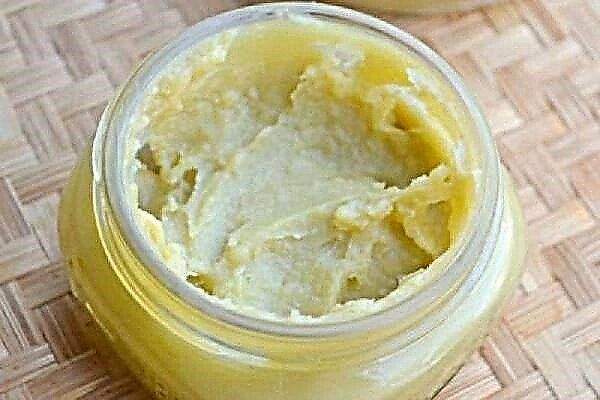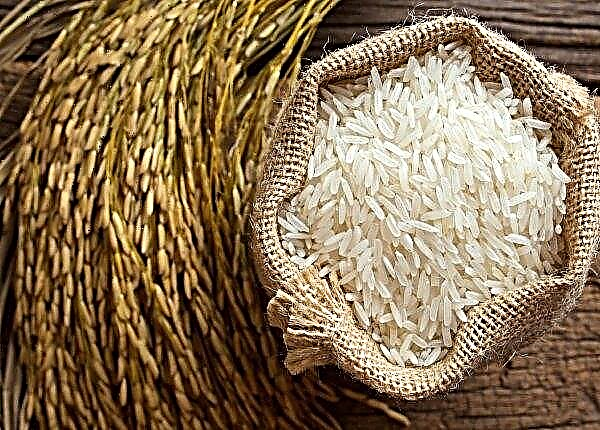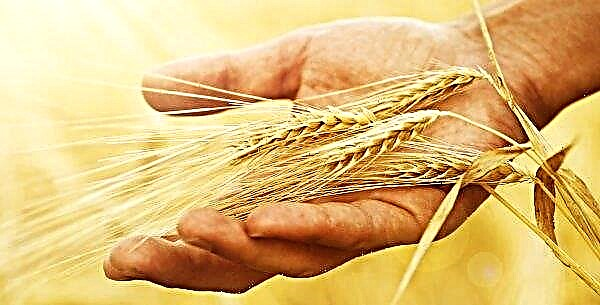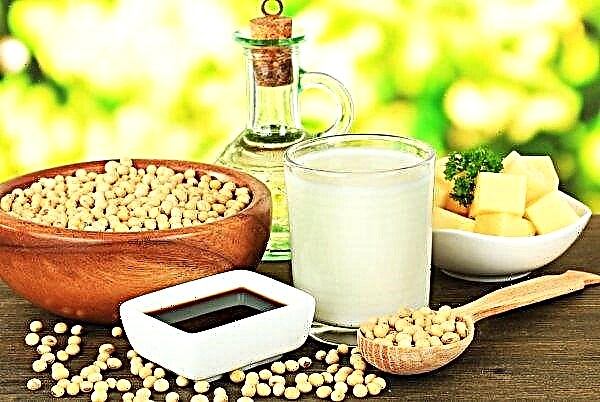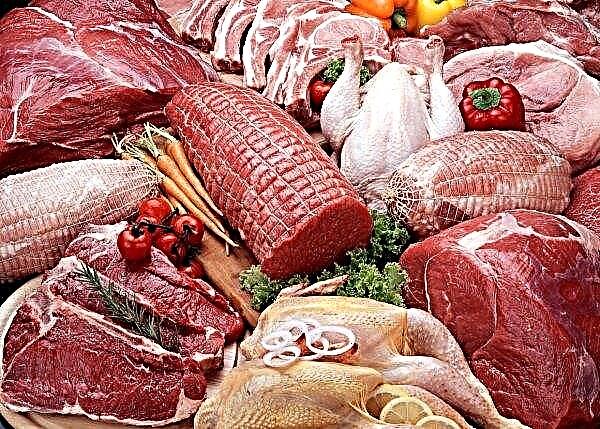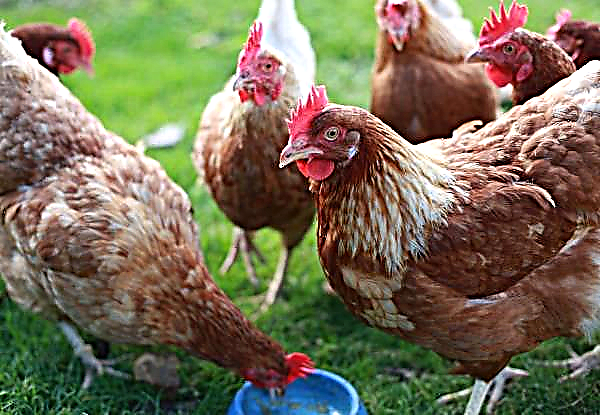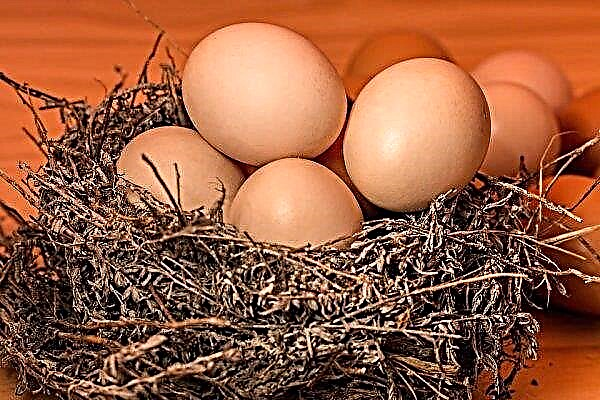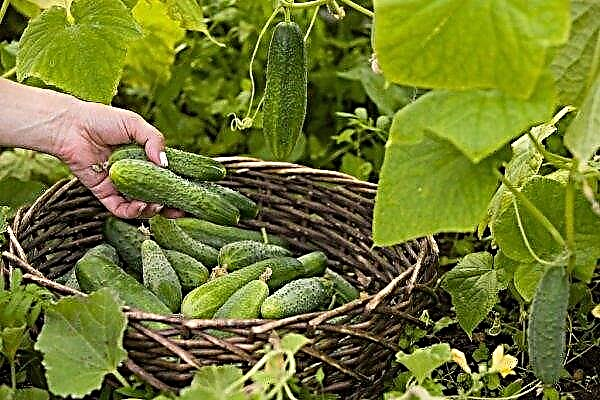The abundant flowering and decorative shape of the hydrangea macrophylla perfection bush attract many designers. With it, your site will look completely different, subject to proper care. From this article you will learn how the plant looks and what needs to be done to grow this beauty yourself.
Botanical grade description
There are a great many varieties of large-leaved hydrangea, and although there are no experienced ones in this field, beginners can sometimes buy different species, and discover the same one. To avoid this, you need to understand the nuances.
Initially, a variety emerged that belonged to the Forever and ever series and was called Double Pink (Double Pink), but later it was allocated to the You and me group (Yu and Mi, You & me, You-me, Youme ) called Romance or Perfection. This group also includes varieties Emotion, Eternity, Expression, Forever, Passion, Symphony, Together. The author is Ryoji Irie from Kyoto, who was pollinated by an unknown seedling of large-leaved hydrangea by the mother plant of the Yamaajisa variety (Mountain Taste). The Japanese received a patent under the number RIE9 for his invention.
Description of perfection give such:
- refers to the type of ornamental shrubs;
- perennial;
- grows in width to 0.9 m, in height - up to 1 m;
- shoots form a dense crown in the shape of a sphere;
- leaves are located opposite each other, intense green in color, elongated, rough to the touch, serrated edges;
- begins to bloom in June; ends in October;
- pink or blue flowers, panicle-shaped flowers in the shape of stars are barren, reach a size of about 4 cm, have a double look (arranged in several rows), the petals are pointed at the end, collected in spherical inflorescences with a diameter of about 25 cm, sepals in the shape of petals;
- cultivar, blooms on last year's and annual shoots;
- for 1 year gives an increase of about 20 cm;
- drops foliage in the fall, turns green again in the spring;
- able to withstand frosts down to -28 ° С.
Did you know? For the Japanese festival of Khan Matsuri (Flower Festival), which is dedicated to the birth of the Buddha and is held on April 8, Buddhist monks prepare a large amount of Amatya tea brewed from hydrangea leaves. Celebrators water the statue of the newborn Buddha, and also drink with pleasure themselves.
Pros and cons of the variety
- The benefits of hydrangea perfection include:
- beautiful appearance;
- ability to fit into various design ideas;
- the ability to influence color using soil acidity;
- flowering on shoots aged 1 and 2 years;
- low light requirements;
- resistance to diseases and pests.
- Shrub disadvantages include:
- the need for shelter for the winter;
- need for pruning;
- sensitivity to excessively alkaline soils;
- need for regular watering;
- sterility, does not propagate by seeds;
- flowering depends on proper care.
Hydrangea planting
In order for Hydrangea Perfection to grow normally, it is necessary to go through the following stages during planting:
- Site preparation.
- Selection and preparation of seedlings.
- Compliance with the timing of landing.
- Landing in accordance with the rules.
Site preparation
The place you choose to grow Hydrangea Perfection must meet the following requirements:
- not to be in the midday sun, only lit in the morning or in the evening;
- to be slightly shaded;
- have wind protection;
- soil acidity not more than 6.2 pH, so as not to cause leaf chlorosis due to lack of iron;
- not under large trees, so that they do not drink all the moisture from the soil;
- coniferous and heather plants may be suitable as neighbors.

In the process of preparing the place:
- Dig a hole measuring 35 × 35 cm.
- Keep a distance of 1 m if you need several pits.
- Put drainage from pebbles or expanded clay at the bottom, do not use crushed stone.
- Prepare the ground. You can use heather soil, a mixture of the same parts of garden (or turf with leaf and sand) and coniferous land with peat and humus. Add complex mineral fertilizers there as recommended by the manufacturer. To obtain blue flowers, aluminum sulfate is required. The addition of a hydrogel will help improve soil moisture.
Important! If you plant Hydrangea Perfection in soil with an acidity of 5–5.5 pH, it will bloom in blue, 6–6.2 pH in pink.
Seedling selection and preparation
The correct hydrangea seedling looks like this:
- he has at least 2 shoots;
- healthy appearance of the root system;
- no mold and mold smell;
- the roots are wet;
- the foliage is intensely green, elastic, without signs of wilting and brownish tint.
In the process of preparing the seedling for planting, its roots are slightly cut off and the shoots are shortened, leaving at least 6 buds.

Landing time
The most suitable period for planting in open ground will be spring. Choose a time when spring frosts will no longer threaten the plant, the soil will thaw and warm up. Planting in a container can also occur in the fall.
Landing technology
To plant Hydrangea Perfection:
- Pour some prepared soil into the bottom of the pit over the drainage layer.
- Lower the seedling in the center of the hole.
- Spread the remaining soil so that the root collar remains outside.
- Tamp.
- Pour.
- Sprinkle with a layer of peat mulch about 7 cm thick.

Care Features
One of the key points in the process of caring for perfection is watering, because a variety cannot grow in dry soil. Regularity depends on how quickly the soil becomes dry. In the heat, you may need about 1 watering per week with an amount of water of about 25 liters per 1 bush. The water used is soft, warm, rain can be defended. Drop watering is suitable.
If you need to change the color of the plant to blue, then add peat, potassium aluminum or potassium ammonium alum in the amount of 3-5 g per 1 liter or aluminum sulfate (dilute 1 tbsp. Of substance in 5 liters of water). When you want to get a pink color, water once a week with a slightly strong solution of potassium permanganate, water with the addition of ash or dolomite flour.
Did you know? The trick of experienced gardeners - buried in the ground near the roots Perfect nails will acidify the soil and help ensure long-term hydrangeas blue color.
Fertilize hydrangea with complex mineral fertilizers. If the content of nitrogen, phosphorus and potassium is 25 × 5 × 30, it will bloom in blue, if 10 × 40 × 10 - pink. You can fertilize with slurry or peat mortar.
Top dressing should be 3:
- in the spring;
- in June, when buds form;
- 2-3 weeks after the start of flowering.

During pruning, old and diseased branches are removed. From the age of three, bushes need formation. If you want to get several large inflorescences, shorten the shoots to 2-3 buds, and if a large number of small ones, cut only the tops. You can trim in the fall or spring. For the winter, the trunk circle should be sprinkled with mulch, pressed to the boards laid on the ground, and the plant itself should be covered with a film, roofing material or lutrasil. You can also use spruce branches, leaves, boxes of wood or cardboard. You can simply dig it out and transfer it in containers to the room.
Breeding methods
Hydrangea perfection is propagated in the following ways:
- cuttings;
- layering;
- dividing the bush.
Cuttings
The technology for propagating shrubs by cuttings looks like this:
- In the morning, before the dew evaporates, cut off the most developed branch with a large number of buds.
- Dip it in a container of water.
- Cut off the top; divide the rest into segments, leaving 3 pairs of leaves on each.
- Cut the top leaves in half, the bottom - to hemp.
- Dip the obtained segments in a solution of "Kornevin" or "Zircon" for 2 hours.
- Prepare the pots, mix 2 parts of peat soil and 1 part of sand, pour in them.
- Dip the cuttings in the ground, pour, cover with a glass jar.
Propagation by layering
In order to propagate the perfection by layering:
- Choose a side shoot.
- Press it to the ground, securing with a bracket, and sprinkle with soil.
- Wait until spring until it takes root and forms its own root system.
- Transplant to a new place.
Dividing the bush
In order to propagate hydrangea by dividing the bush:
- Gently dig a plant from the ground.
- Divide into 2 approximately equal parts, making sure that they are equivalent in the number of strong shoots and well-developed roots.
- Seed the resulting fragments into different wells, observing a distance of 1.5–2 m between them.

Diseases and Pests
Perfection is slightly affected by pests and diseases, this can only happen due to improper care.
Important! Through garden tools or a pest infestation, hydrangea can become infected with viral infections. There is no cure for them - most often the infected plant has to be simply destroyed.
Among the pests are dangerous:
- spider mite;
- aphid;
- rodents that make holes under the roots of the bush.
 The first two species are fought with insecticides, and against the latter, traps, baits with toxic substances, and shelter of the soil are used.
The first two species are fought with insecticides, and against the latter, traps, baits with toxic substances, and shelter of the soil are used.
Hydrangea is affected by such diseases:
- powdery mildew - drugs containing copper, fungicides help;
- gray rot - fungicides are used to fight;
- chlorosis - it is necessary to increase the acidity of the soil;
- rust - use copper sulfate;
- Septoria - plantings are treated with Burgundy or Bordeaux liquid, fungicides.

So, large-leaved hydrangea is a decorative plant native to Japan. Depending on how you care for it, it may bloom in pink or blue. Due to its beauty, ability to fit into various plans and undemanding care, gardeners are very fond of it, but do not forget to water the plant in time and monitor the level of soil acidity.

